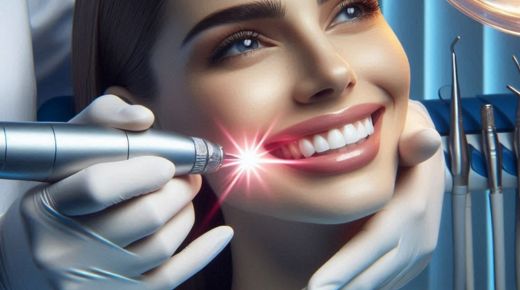The Role Of Dental Lasers In Cosmetic Dentistry

Cosmetic dentistry has evolved over the years, with new technologies improving both results and patient comfort. One of these innovations is the use of dental lasers. Dental lasers offer precise and effective treatments, reducing recovery time and enhancing outcomes. Dr. Marvin Taylor, a leader in this field, shows how these tools reshape cosmetic procedures. In this blog, I explore their benefits and applications.
What Are Dental Lasers?
Dental lasers are tools that emit concentrated light energy. Dentists use them for various procedures, particularly in cosmetic dentistry. The laser interacts with tissue, allowing for precise cutting or shaping. This precision means less damage to surrounding areas.
Benefits of Dental Lasers
Using dental lasers in cosmetic procedures offers several benefits:
- Precision: Lasers target specific areas, minimizing impact on surrounding tissues.
- Reduced Pain: Patients often experience less discomfort during and after procedures.
- Faster Healing: Laser treatments can lead to quicker recovery times.
Applications in Cosmetic Dentistry
Dental lasers have various applications in cosmetic dentistry, including:
- Teeth Whitening: Lasers enhance the bleaching process, offering brighter results in less time.
- Gum Recontouring: Lasers reshape gums with precision, improving the appearance of the smile.
- Lesion Removal: Lasers can remove lesions painlessly, often eliminating the need for stitches.
Comparison with Traditional Methods
| Feature | Dental Lasers | Traditional Methods |
| Precision | High | Moderate |
| Pain Level | Low | Variable |
| Recovery Time | Faster | Slower |
Safety Considerations
Dental lasers are generally safe when used by trained professionals. They are approved by the U.S. Food and Drug Administration (FDA) for various dental procedures. Dentists ensure protective measures, such as goggles, are in place to safeguard patients.
Future of Dental Lasers in Cosmetic Dentistry
Dental lasers continue to grow in popularity. They open up new possibilities for patient care and comfort. As technology advances, their role in dentistry will likely expand. According to the National Institute of Dental and Craniofacial Research (NIDCR), ongoing studies explore even more uses for lasers in oral health.
Conclusion
Dental lasers provide an effective alternative to traditional cosmetic dental procedures. They offer precision, reduced pain, and faster recovery times. As their applications expand, they promise to enhance patient experiences further. Trusting these modern tools means embracing a brighter, more comfortable future in cosmetic dentistry.



